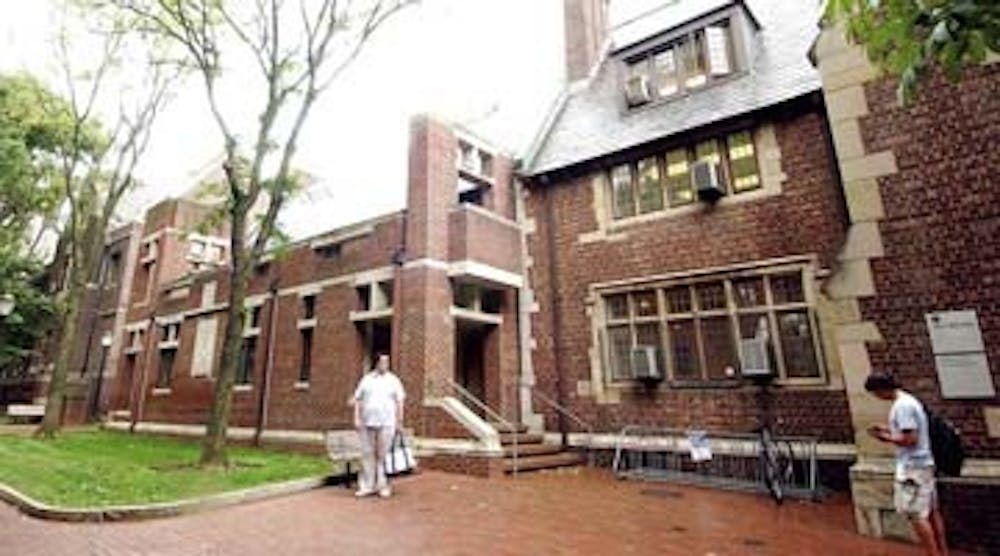The old Hillel building may be nothing but dust and rubble at this point, but a few small pieces live on.
In demolishing the building to make way for the new Annenberg Public Policy Center, the University saved two stones, the cornerstone and dedication stone, from the demolished building as a way of celebrating its significance to Penn's Jewish community.
"They're a piece of history of Hillel and have sentimental value for those of us who were part of that community for years," Penn Hillel director Jeremy Brochin said of the stones.
"It's a sense of seeing ourselves in the line of tradition from when Hillel was just a small little house . to what we have today," he said.
The 36th and Walnut streets property was purchased for Hillel in 1948 and served as the Jewish community hub until the current Hillel building, Steinhardt Hall, went up in 2003.
At this point, Hillel officials do not have concrete plans for using the stones, though Brochin hopes to display them eventually.
For the removals, Penn Facilities called in Second Chance, a firm that specializes in deconstruction and architectural salvage.
"It is a regular practice in the construction industry to give contractors the right to salvage that which they feel might have value," University architect David Hollenberg Hollenberg wrote in an e-mail.
While the two stones are being donated to Penn Hillel, other removed items - including benches, doors, interior windows, bathroom fixtures and fireplace mantels- are going to Second Chance to support its mission of restoration and conservation, he added.
David De Long, a professor of architecture in historic preservation, said preserving parts of historic buildings on college campuses is a fairly common practice.
"It's sort of like saving a souvenir of a good trip," he said, adding that, oftentimes, cornerstones may be "more personal in nature and have local meaning to people who want to remember the building."
Hollenberg said he is pleased with the results of the salvaging, writing that, while the University currently has no plans to demolish any other old buildings, it will continue to use this approach.
"It supports our value of preservation of useful materials for historic purposes, but also has a sustainability function as well - every item that is salvaged and reused in another project is an object that does not need to be built from scratch, using new resources," he wrote.
This isn't the first time that Penn has played the role of preserver - the cornerstone from the President's House at Penn's early 1800s Old City campus is currently housed in College Hall, and the "Old Academy Bell", which hung in the Academy of Philadelphia in the 1700s, is on display in Van Pelt Library.



